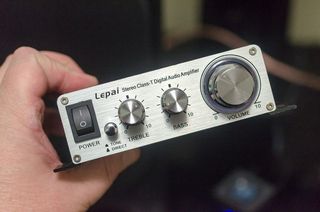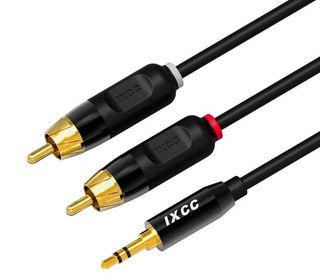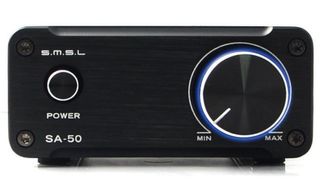How to use Chromecast Audio as a whole-home audio alternative to Sonos

With the death of Chromecast Audio and no replacement yet announced, it's more important than ever to know what you can do with Google's cheap audio casting puck. Used Chromecast Audios are still to be found, as well as close-outs of retailers final stock. We hate to see this uber-capable device ride off into the sunset, but love knowing that they'll still function and you can cover your whole house with the sound of music.
Why go with Chromecast Audio?
If you're thinking about setting up a whole-house (or even just a single-room) streaming audio solution, Sonos systems are pretty much what you'll find recommended by folks on the internet. They are easy to set up and the Sonos service offers a decent choice of streaming content providers. But the price tag — you'll be spending hundreds per room for individual Sonos amps or speakers — can be tough to swallow. We've got a solution: Use a Chromecast Audio and a few standard components and save a whole lot of money.
Three things make the Chromecast Audio a good (or even better) alternative — the Chromecast has its own 96KHz / 24bit capable audio hardware, the 3.5mm combination output supports optical as well as analog connections, and the Google Cast app lets you create groups or zones so you can stream your music to specific sources just like you can with a Sonos. There is even a high dynamic range setting for hi-res music files. And you won't have to hack or mess around with any hardware, either. Plug your Chromecast Audio into a set of powered speakers, or a small amp and passive speakers, or even an A/V receiver, and cast some music.
Getting started

You'll need three things: a Chromecast Audio, something to play the music that's streaming, and something to initiate it. The Chromecast Audio is the only part of the list that's not easy to find. They're still available on eBay from time to time and I've seen them sell for about $25.
To tell the Chromecast what to play, you'll need an Android or iOS device or a computer running Google Chrome. A Chromebook works really well, too. Install the Google Home app and it will walk you through finding your Chromecast(s) and setting them up. You'll then be able to stream from popular online services like Google Play Music, Pandora, Spotify and plenty of others. You can also stream your own hi-res music from a network-attached storage device using a server like Plex or an app like BubbleUPnP for your Android phone. You can also mirror local files from your Android phone or tablet or cast audio directly from a Chrome tab across your local network. There are plenty of options when it comes to the source of your music, and more apps are adding Google Cast support all the time.
Playing back the sound is really the only part you'll need to think about. You need a way to get the audio from the Chromecast's 3.5mm jack to a pair of speakers (either powered or via an external amp). There is nothing special about how this is done. In fact, you can plug a pair of headphones into your Chromecast Audio and it plays exactly as you would expect. That means you can let your needs and your budget decide what you use here.
Add some speakers

Probably the best-sounding solution would be to use a small bookshelf amplifier and a pair of passive speakers. An amp can cost as little as $20 and will work fine because we're not necessarily looking for bells and whistles — we just need a way to increase the power of the signal and pass it along to some speakers. Decent bookshelf speakers start at $50 or so, while great ones can be bought for about $100. I love Pioneer's SP-BS22-LR Andrew Jones Bookshelf Loudspeakers if you plan on using a larger amplifier.
Be an expert in 5 minutes
Get the latest news from Android Central, your trusted companion in the world of Android
You can even splurge and use a pair of studio monitors (along with an amp capable of driving them) for one or more rooms if you plan on streaming a lot of hi-res music. The folks where you buy your speakers will be able to help you if you're not sure what to buy, Just tell them what you're planning to do and they'll point you towards everything you would need. Add in a few cables and you've just built a great audio streaming setup without breaking the bank.
Here's an example of a good setup that would compare to a pair of Sonos Play 3 speakers or a Sonos Connect amp setup:
Chromecast Audio
You'll start with a Chromecast Audio.
These are around $35 and you'll get the device itself, a 3.5mm patch cable, a power supply, and power cord. Depending on the amp or powered speakers you buy, you may need other cables. For our setup here you'll need a 3.5 male to RCA male cable and this 6-foot long one lets you put your Chromecast behind everything so it's hidden.

1 output and 2 speakers
All cables are not the same! this 6-foot 3.5 to RCA cable is silicon coated so it's supple and strong. It's the one I use myself and deserves its high rating at Amazon.
A small amplifier
Next, you'll want a bookshelf amp or car amp with a power supply.
There are hundreds to choose from at every price point. I've found the SMSL SA50 to be the very best bang for your buck at around $70. It's small, the signal is clean and it puts out a solid 30ish watts of power without any problems.
You'll need Banana Plugs for your speaker wire with this amp, and you can get five pairs of Monoprice plugs for about $7. That gives you a spare set (if you use them on the speakers, too) just in case. Always plan for "just in case".

Great sounding (and cheap!)
This small amp from SMSL will power a set of bookshelf speakers and uses very little power. It's a perfect addition to a DIY Audio solution.

No more twisting wire ends
Banana plugs make connecting speaker wire a breeze — plus no more twisting wires every time you want to unhook a speaker. Don't forget to buy them.
Bookshelf speakers
Finally, you need a pair of speakers, and they need to be able to fill up your space with sound.
How big and what wattage you need depends on where you're putting them. For a smaller amp like our recommendation above, a pair of Micca Bookshelf speakers will sound excellent. There are countless models of bookshelf speakers in almost any size and at every price point, so you'll have plenty of options. Just be sure the speakers you buy are a good match with your amp.

Big sound in a small package
These small speakers still sound great. They match well with small bookshelf amps and will fit just about anywhere.
Using self-powered speakers
You can also buy active (self-powered) speakers instead of buying a separate amp and passive speakers. this is a bit easier to set up, casts a good bit less, and still sounds excellent with a good pair of speakers.
Powered speakers will plug into the wall and have their own internal power supply so don't try to use a set of them with a separate amp unless you know what you're doing! These Edifier R1280T speakers look great and sound really nice for $100, but you'll also find plenty of other options. Connect them to each other and a wall outlet per the directions that came with them and plug the Chromecast Audio into the inputs using the correct cable.
Now just sit back and listen to how great it sounds and think about how much money you saved!

Easy and awesome
these powered speakers from Edifier sound as good or better than most component systems designed for small spaces but are a lot easier to set up. You'll probably save some money, too.
Saving money sounds great!
Even after adding in the cost of a few cables and things like speaker stands if you want or need them, this is a much cheaper alternative that sounds great and has support for more services than a Sonos system. The only downside is wiring things up, which should take just a few minutes because everything on this list will be plug and play. Now multiply the savings by the number of places you want to bring your music to, and you'll have saved a lot of money.
A great-sounding system is easy to build, or you can plug a Chromecast Audio into your existing setup.
A Chromecast Audio is also really easy to drop into your existing home stereo or entertainment center. If you already have a great setup and would love to use Google Play Music or listen to your music across your own network, all you need to do is plug a Chromecast Audio into an open optical input using a Toslink cable and fire up the Google Cast app. Being versatile is a big plus, and a Chromecast Audio will fit almost anywhere and connect to anything using standard cables.
Whether you're just looking for a cheap and easy way to build a streaming stereo for one room or want to connect your whole house with multiple setups indoors or out, a Chromecast Audio is a great way to do it.

Jerry is an amateur woodworker and struggling shade tree mechanic. There's nothing he can't take apart, but many things he can't reassemble. You'll find him writing and speaking his loud opinion on Android Central and occasionally on Twitter.
